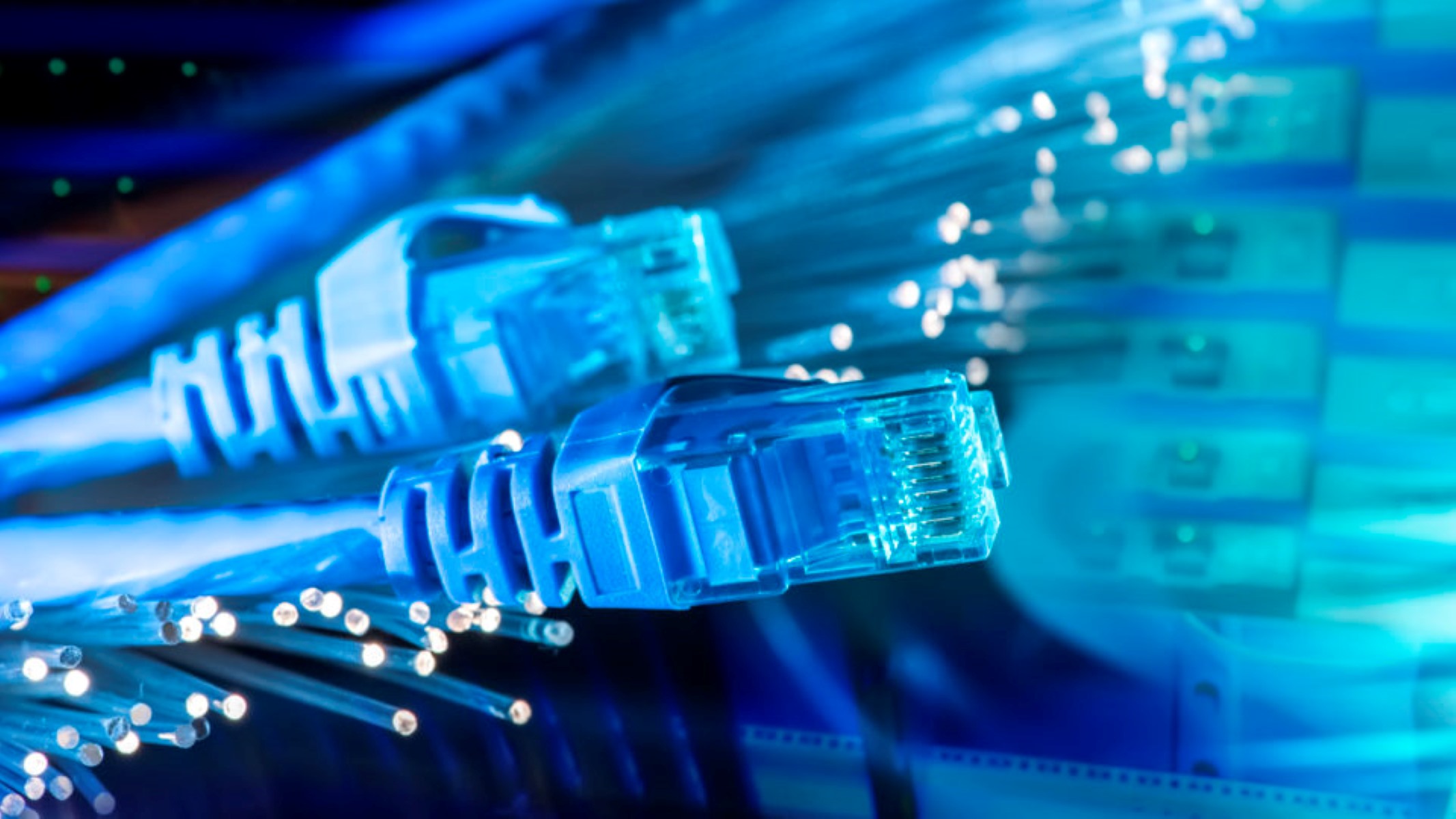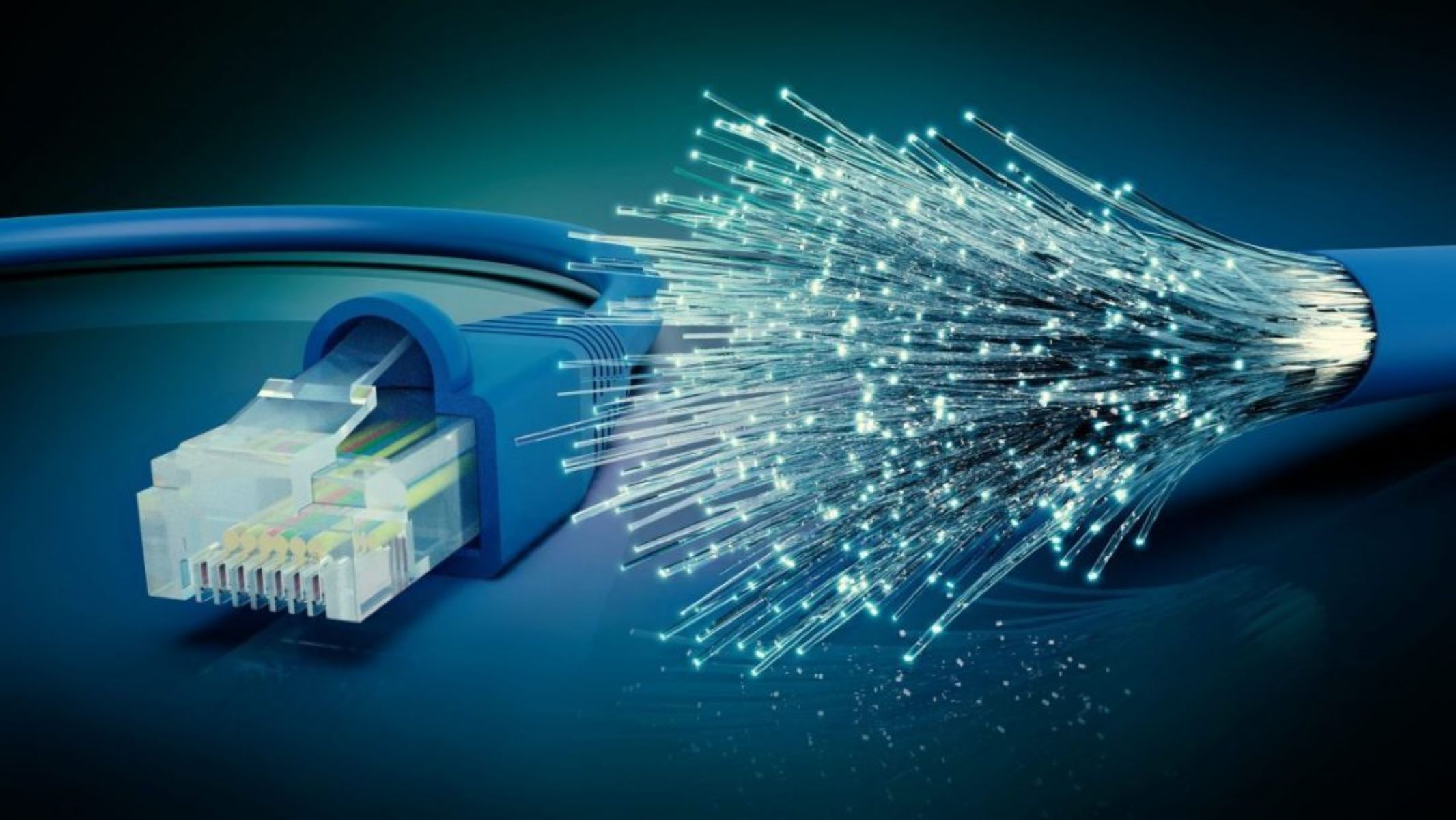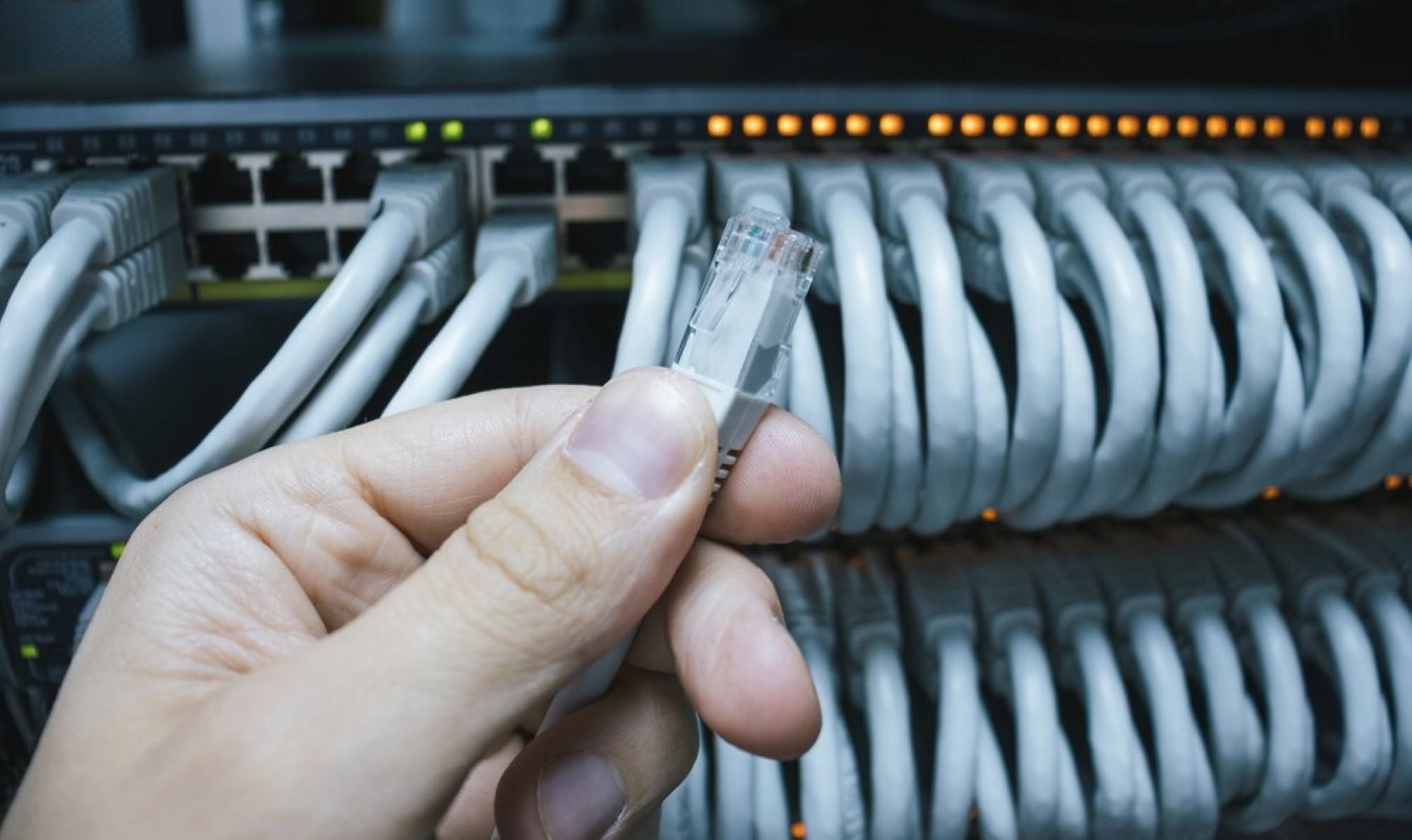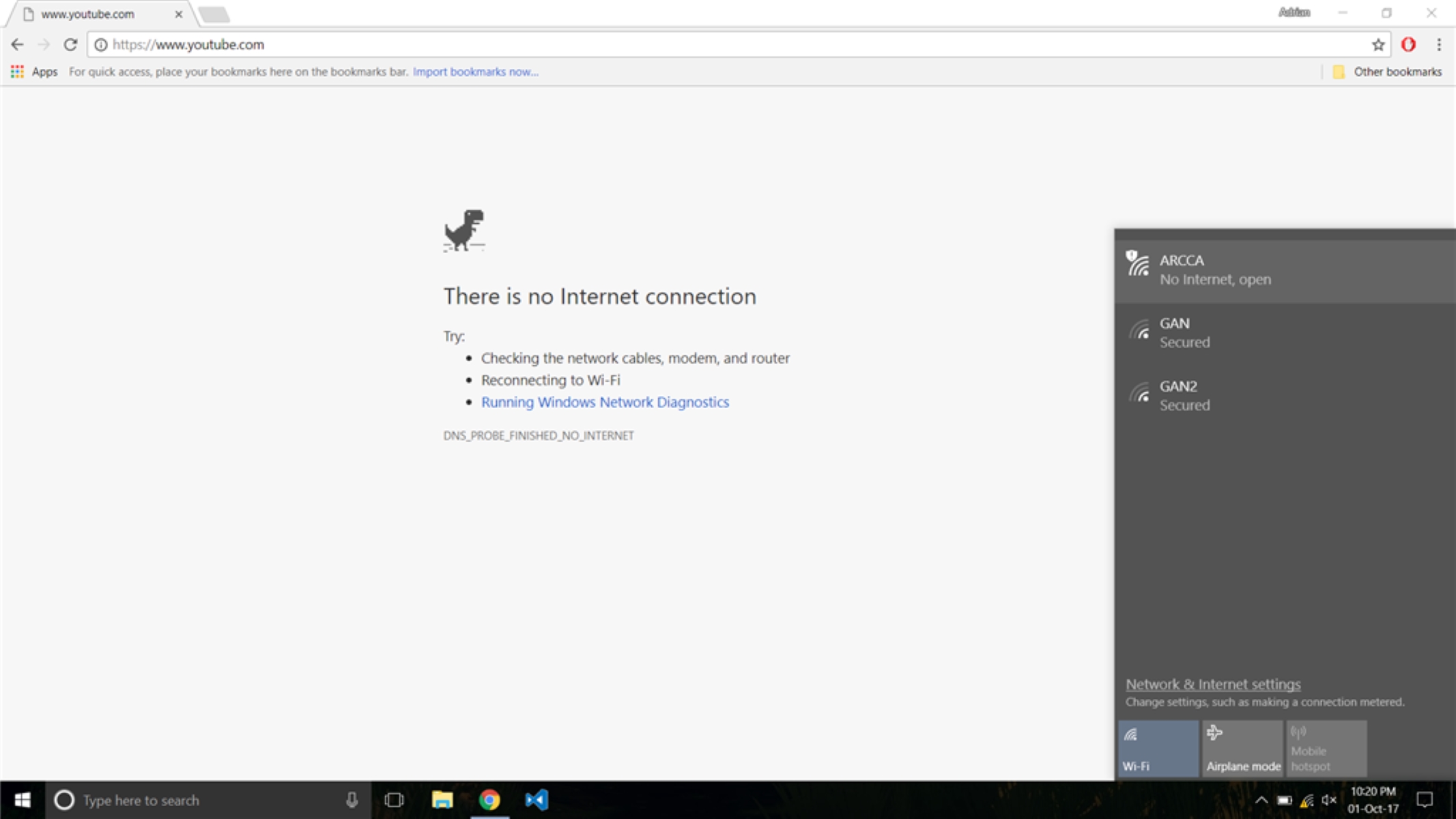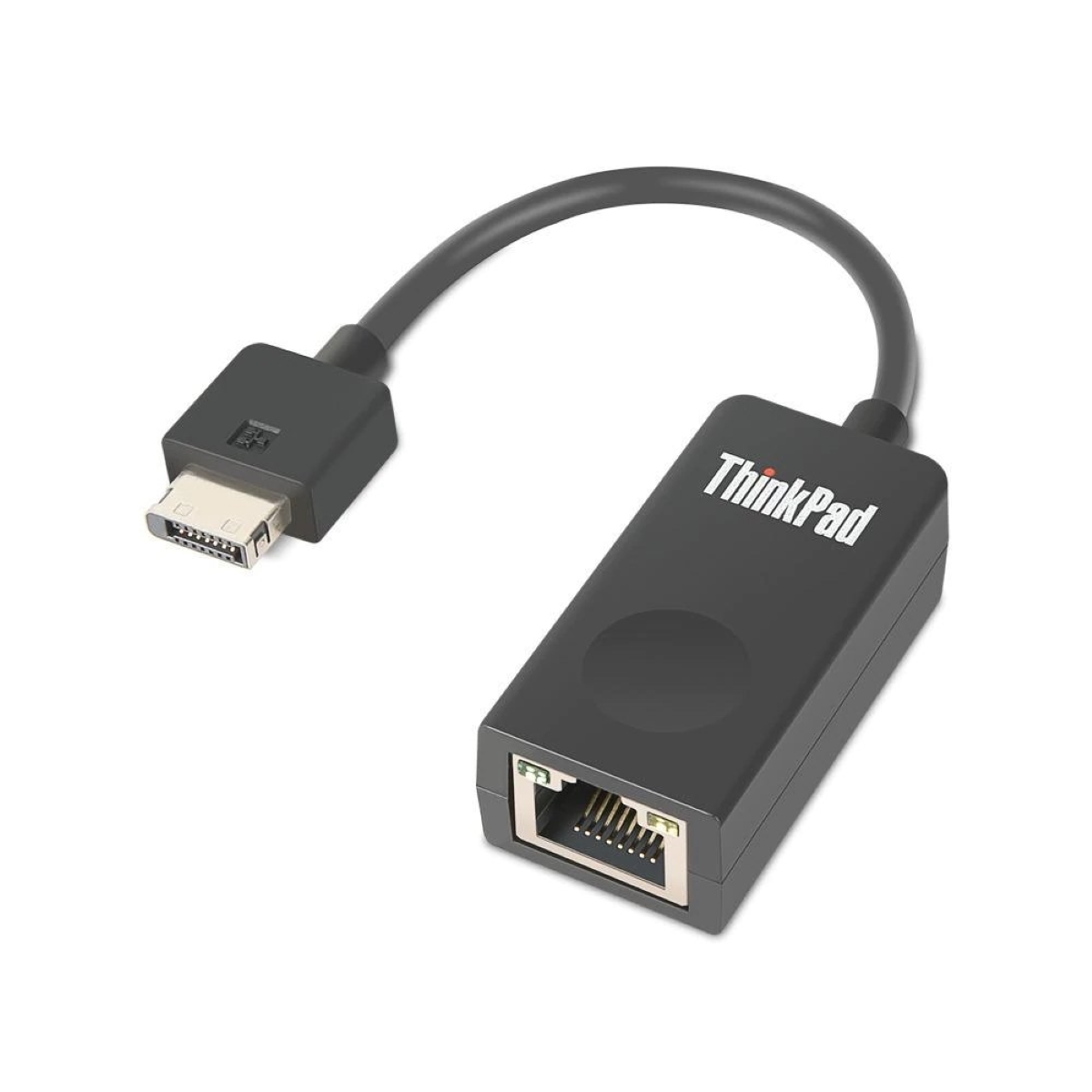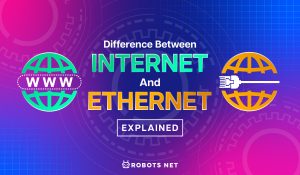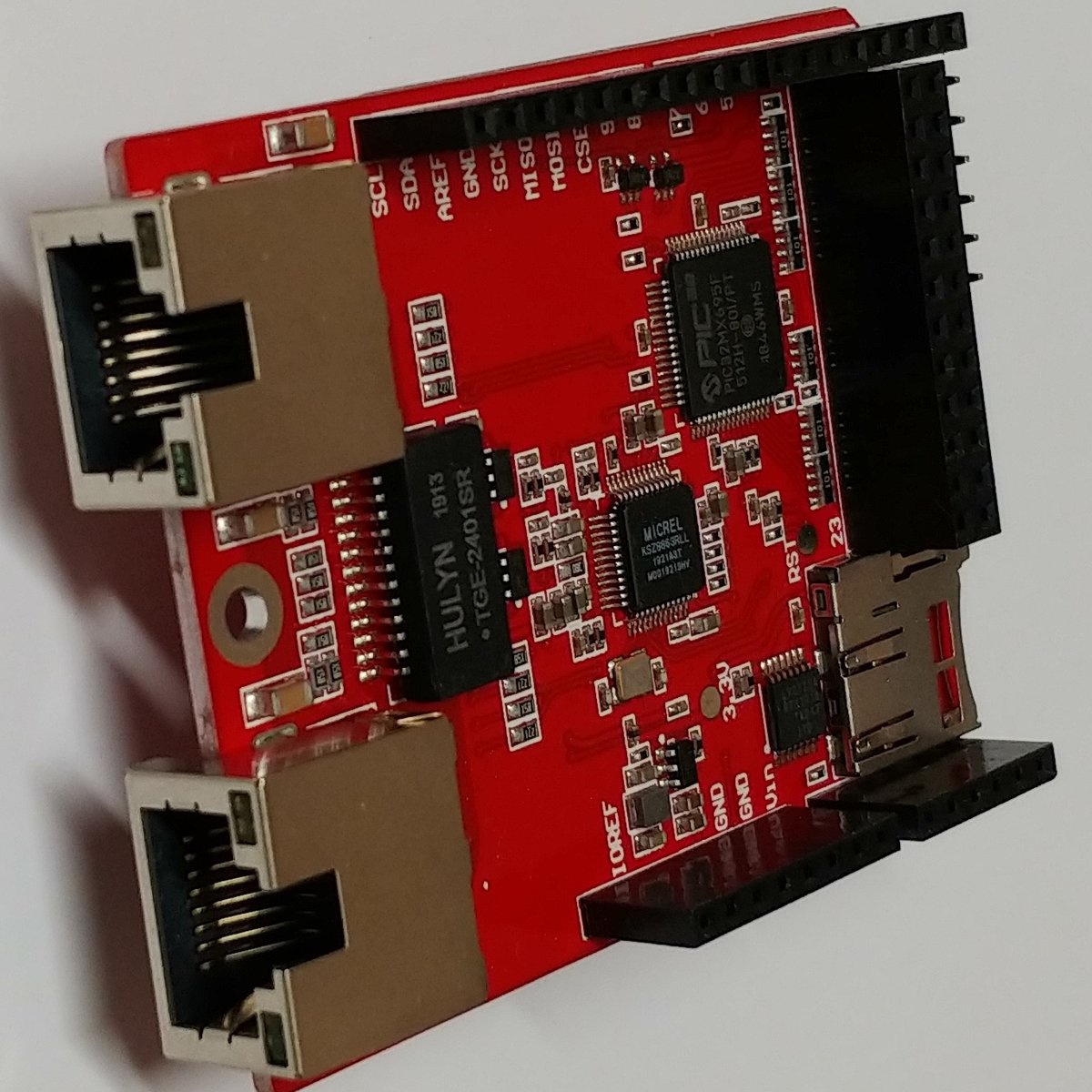Introduction
Welcome to the world of Ethernet protocols! In today’s digital age, where connectivity is essential, understanding how data is transmitted and received over networks is crucial. Ethernet protocols play a vital role in ensuring seamless communication between devices. In this article, we will explore the basics of Ethernet and delve into the concept of Ethernet protocols.
Ethernet is a widely used technology for local area networks (LANs). It provides a means of transmitting data packets from one device to another. The Ethernet standard was first introduced in the 1970s by Xerox, Intel, and Digital Equipment Corporation (DEC), and it has since evolved to become the de facto standard for networking.
A protocol, in the context of networking, refers to a set of rules or guidelines that govern how data is transmitted and received between devices. It defines the format of the data, the order in which it is sent, and the actions that should be taken upon receiving it. Simply put, a protocol ensures that all devices communicate in a universal language to exchange information.
An Ethernet protocol, then, is a specific set of protocols that govern the implementation of Ethernet in a network system. It defines how devices connect, communicate, and transmit data over an Ethernet network. These protocols ensure that data is transferred reliably, efficiently, and securely.
So how does an Ethernet protocol work? Each Ethernet protocol has its own set of rules and specifications. When a device wants to send data over the network, it uses the Ethernet protocol to package the data into small packets. These packets contain the necessary information, such as the source and destination addresses, as well as the actual data.
Once the packets are ready, they are transmitted over the Ethernet network. The devices on the network receive the packets and use the protocol to decipher the information and determine the appropriate actions. This could include rerouting the packets, acknowledging receipt, or discarding packets with errors.
There are various types of Ethernet protocols, each designed for specific purposes. Some common examples include Ethernet/IP for industrial automation, EtherCAT for real-time control systems, and Power over Ethernet (PoE) for delivering power to connected devices.
Ethernet protocols also adhere to specific standards to ensure compatibility and interoperability between devices from different manufacturers. The most well-known Ethernet standard is the IEEE 802.3, which defines the physical and data link layer specifications for Ethernet networks.
Now that we have a basic understanding of Ethernet protocols, let’s explore the advantages and disadvantages they offer in the realm of networking. Understanding these aspects can help in making informed decisions about implementing Ethernet protocols in various scenarios.
What Is Ethernet?
Ethernet is a widely used technology for local area networks (LANs) that allows devices to connect and communicate with each other. It provides a means of transmitting data packets over a network, enabling devices to share resources, access the internet, and communicate with one another.
At its core, Ethernet is a physical and data link layer technology that defines the hardware and protocols used for transmitting data. It utilizes a system of cables, connectors, and networking devices such as switches and routers to enable communication between devices.
Ethernet operates on the principle of transmitting data in the form of packets. These packets contain the information to be communicated, such as a file, an email, or a web page. The data is divided into smaller chunks, encapsulated within packets, and transmitted over the network.
The key components of an Ethernet network are:
- Devices: These include computers, laptops, servers, printers, and other network-enabled devices that connect to the Ethernet network.
- Network Interface Cards (NICs): These are hardware components installed in devices that allow them to connect to the Ethernet network. NICs provide a physical connection between the device and the network infrastructure.
- Cables: Ethernet networks use various types of cables, such as twisted pair copper cables or fiber optic cables, to carry the data signals between devices.
- Switches and Routers: These networking devices facilitate the flow of data between devices on the network. Switches enable devices on the same network to communicate with each other, while routers are responsible for directing data between different networks.
One of the fundamental aspects of Ethernet is its ability to support multiple devices on the same network. This is achieved through the use of Media Access Control (MAC) addresses. Each network device is assigned a unique MAC address, which is used to identify and route data to the appropriate device.
Ethernet offers a range of speeds and transmission technologies, with the most common being 10/100/1000 Mbps Ethernet. This represents the maximum data transfer rate in megabits per second (Mbps) that the Ethernet network can support.
Over the years, Ethernet has evolved to incorporate new technologies and standards, allowing for higher speeds, improved bandwidth utilization, and greater reliability. The IEEE (Institute of Electrical and Electronics Engineers) has played a significant role in developing and standardizing Ethernet specifications.
Overall, Ethernet has become the backbone of modern networking, providing a reliable and flexible means of connecting devices and enabling communication. It is the foundation upon which many other network technologies and protocols are built, making it an integral part of our connected world.
What Is a Protocol?
In the realm of computer networks, a protocol can be defined as a set of rules and guidelines that govern the communication between devices. It establishes the standards and procedures for transmitting data, ensuring that devices can understand and interpret the information being exchanged.
A protocol acts as a language that facilitates communication between devices on a network. It defines the format and structure of the data being transmitted, ensuring that it can be correctly interpreted by the receiving device. Without protocols, devices would not be able to understand or make sense of the information being sent to them.
Protocols can be categorized into different layers, each responsible for a specific aspect of the communication process. The most well-known layered protocol architecture is the OSI (Open Systems Interconnection) model, which consists of seven layers, each with its own set of protocols.
Let’s briefly discuss the layers of the OSI model:
- Physical Layer: This layer is responsible for transmitting raw data bits over a physical medium, such as copper wires or fiber optic cables. It defines the electrical, mechanical, and signaling aspects of the communication.
- Data Link Layer: The data link layer ensures reliable transmission of data across a physical link. It handles error checking and flow control, ensuring that data reaches its destination without any corruption or loss.
- Network Layer: The network layer is responsible for addressing, routing, and forwarding data packets between different networks. It determines the best path for data to reach its destination and handles network congestion.
- Transport Layer: This layer focuses on end-to-end communication and provides services for reliable and efficient transmission of data between devices. It ensures that data is delivered intact and in the correct sequence.
- Session Layer: The session layer establishes, manages, and terminates communication sessions between devices. It allows devices to establish a connection, exchange data, and synchronize their activities.
- Presentation Layer: This layer is responsible for data representation and translation. It handles the conversion of data into a format that can be understood by the receiving device, including encryption and compression.
- Application Layer: The application layer provides services to end-users, enabling them to access network resources such as email, file transfer, and web browsing. It contains protocols that support specific applications.
Each layer of the OSI model interacts with the layer above and below it, ensuring that data is properly encapsulated, transmitted, and received. Protocols at each layer work together to provide a seamless and reliable communication experience.
Protocols are not exclusive to computer networks but are also utilized in various other domains, such as telecommunications, internet protocols, and industrial automation. They are essential for enabling interoperability between devices from different manufacturers and ensuring consistent communication standards.
In summary, protocols are the backbone of communication in computer networks and other communication systems. They define how devices connect, exchange information, and ensure the reliable transmission of data. By adhering to protocols, devices can effectively communicate and collaborate, enabling the seamless flow of information across networks of all types.
What Is an Ethernet Protocol?
An Ethernet protocol refers to a specific set of rules and guidelines that govern the implementation of Ethernet in a network system. Ethernet, in itself, is a widely used technology for local area networks (LANs) that facilitates the transmission and reception of data packets between devices.
The Ethernet protocol defines how devices connect, communicate, and transmit data over an Ethernet network. It ensures that data is transferred reliably, efficiently, and securely, making it an essential component in modern networking.
When a device wants to send data over the network, it uses the Ethernet protocol to package the data into smaller units called packets. These packets contain the necessary information, including the source and destination addresses, as well as the actual data being transmitted.
The Ethernet protocol standard specifies the format and structure of these packets, ensuring that they can be correctly interpreted by the receiving devices. This includes details such as the length of the packet, the type of data being transmitted, and any error checking mechanisms.
Once the packets are ready, they are transmitted over the Ethernet network. Each device on the network receives the packets and uses the Ethernet protocol to decipher the information contained within. This involves checking the validity of the packet, verifying the source and destination addresses, and determining the appropriate actions to be taken.
For example, if the receiving device determines that the packet is intended for it, it will accept and process the data. If the packet contains errors or is intended for another device, it may ignore or discard the packet. Additionally, the Ethernet protocol allows for acknowledgment of received packets, ensuring the reliability of data transmission.
There are various types of Ethernet protocols, each designed for specific purposes. Some common examples include:
- Ethernet/IP: This protocol combines the standard Ethernet functionality with the Internet Protocol (IP) to enable industrial automation. It allows devices to communicate and share real-time data in industrial environments.
- EtherCAT: EtherCAT (Ethernet for Control Automation Technology) is an Ethernet-based real-time control system protocol. It enables high-speed communication between devices in industrial automation applications.
- Power over Ethernet (PoE): PoE is a protocol that allows power to be transmitted along with data over Ethernet cables. It eliminates the need for separate power sources for devices such as IP cameras, wireless access points, and VoIP phones.
Ethernet protocols also adhere to specific standards to ensure compatibility and interoperability between devices from different manufacturers. The most well-known Ethernet standard is the IEEE 802.3, which defines the physical and data link layer specifications for Ethernet networks.
Overall, Ethernet protocols serve as the foundation for reliable and efficient data transmission in Ethernet networks. By following the established rules and guidelines, devices can effectively communicate, enabling seamless connectivity and data exchange in a wide range of applications and industries.
How Does Ethernet Protocol Work?
Ethernet protocols play a fundamental role in the transmission and reception of data over Ethernet networks. They ensure that data is transferred reliably, efficiently, and securely between devices. Understanding how Ethernet protocols work can provide insights into the inner workings of network communication.
When a device wants to send data over an Ethernet network, it follows a series of steps facilitated by the Ethernet protocol:
- Packetization: The device breaks down the data it wants to send into smaller units called packets. Each packet contains a portion of the data, along with important information such as the source and destination addresses.
- Addressing: Every device connected to an Ethernet network has a unique identifier known as a Media Access Control (MAC) address. The sender includes the MAC address of the destination device in the packet, allowing the network to correctly route the data.
- Packet Transmission: Once the packets are ready, they are transmitted onto the network medium. The physical layer of the Ethernet protocol handles the transmission of the packets over the network infrastructure, such as copper or fiber optic cables.
- Packets Reception: Devices connected to the network receive the transmitted packets. Each device listens for packets addressed to its MAC address and filters out others. When a packet matches a device’s MAC address, it accepts and processes the data.
- Packet Evaluation: Upon receiving a packet, the device evaluates its integrity and validity. This involves checking the packet’s integrity (e.g., checking if any bits were corrupted during transmission), verifying the source and destination addresses, and ensuring the packet follows the Ethernet protocol’s defined rules.
- Packet Processing: If the received packet passes the evaluation, the device processes the data within. This could involve actions such as storing the data, forwarding it to another device, or responding to the sender with an acknowledgment.
An important aspect of Ethernet protocols is the concept of collision detection and avoidance. In shared Ethernet networks, where multiple devices share the same physical medium, collisions may occur when two or more devices transmit data simultaneously. To prevent collisions, Ethernet protocols utilize a method called CSMA/CD (Carrier Sense Multiple Access with Collision Detection). This method allows devices to detect collisions and wait for a random period before retransmitting the data.
Ethernet protocols also support various network topologies, including bus, star, and ring. Different Ethernet protocols and standards may have specific requirements or enhancements to accommodate different network topologies and improve performance.
Overall, Ethernet protocols provide the necessary guidelines and procedures to ensure reliable data transmission in Ethernet networks. They handle everything from breaking down the data into packets to verifying the integrity and routing of those packets. By adhering to these protocols, devices can effectively communicate and exchange data in a seamless manner.
Types of Ethernet Protocols
Ethernet protocols encompass a range of protocols that cater to specific applications and industries, each designed to meet specific requirements. These protocols extend the functionality of Ethernet networks and enable efficient communication in various scenarios. Let’s explore some common types of Ethernet protocols:
- Ethernet/IP: Ethernet/IP combines Ethernet with the Internet Protocol (IP) to support industrial automation. It allows devices to communicate seamlessly over an Ethernet network, providing interoperability and integration with other IP-based systems.
- Modbus TCP/IP: Modbus TCP/IP is an Ethernet-based protocol that is widely used in industrial automation and process control systems. It allows communication between devices, such as programmable logic controllers (PLCs), and monitoring devices, providing reliable data exchange.
- Profinet: Profinet is an Ethernet-based industrial communication protocol used in automation systems. It supports real-time communication and provides seamless integration between different devices and systems.
- EtherCAT: EtherCAT (Ethernet for Control Automation Technology) is a high-performance Ethernet-based protocol that is widely used in real-time control systems. It offers low-latency communication, allowing devices to exchange data rapidly in demanding automation applications.
- Power over Ethernet (PoE): PoE is a protocol that enables the transmission of power and data over a single Ethernet cable. It eliminates the need for separate power sources, simplifying installation and providing flexibility for devices such as IP cameras, wireless access points, and VoIP phones.
- Audio Video Bridging (AVB): AVB is a set of Ethernet-based protocols that enable precise timing and synchronization for audio and video streams in professional audio/video applications. It ensures reliable and high-quality transmission of audio and video data over Ethernet networks.
- Time-Sensitive Networking (TSN): TSN is an emerging set of Ethernet standards that aims to provide determinism and real-time capabilities in Ethernet networks. It enables synchronization and prioritization of critical traffic, allowing for latency-sensitive applications in industrial automation and other fields.
These are just a few examples of Ethernet protocols, and there are many more available depending on the specific requirements of different industries and applications. Each protocol brings its own set of features and benefits, tailored to meet the demands of a particular use case.
It’s important to note that these Ethernet protocols often adhere to specific industry standards and are developed and maintained by organizations such as the IEEE (Institute of Electrical and Electronics Engineers) and various industrial consortiums. These standards ensure interoperability and compatibility between devices and systems from different manufacturers.
By leveraging the appropriate Ethernet protocol for a specific application, businesses and industries can take advantage of the flexibility, reliability, and efficiency that Ethernet networks offer, enabling seamless communication and data exchange in a wide range of scenarios.
Ethernet Protocol Standards
Ethernet protocols adhere to specific standards to ensure compatibility and interoperability between devices from different manufacturers. These standards define the physical and data link layer specifications for Ethernet networks, ensuring consistent communication across a wide range of devices. Let’s explore some commonly known Ethernet protocol standards:
- IEEE 802.3 Ethernet: The IEEE (Institute of Electrical and Electronics Engineers) 802.3 standard is the most widely recognized and implemented Ethernet standard. It defines the base specifications for Ethernet networks, including the physical layer (Ethernet cable types, signaling, and connectors) and the data link layer (Ethernet frame format, collision detection, and MAC address usage).
- Fast Ethernet (IEEE 802.3u): Fast Ethernet, based on the IEEE 802.3u standard, extended the capabilities of Ethernet by increasing the maximum data transfer rate to 100 megabits per second (Mbps). It utilized the same Ethernet frame format but introduced the use of Category 5 twisted pair cables, enabling faster data transmission.
- Gigabit Ethernet (IEEE 802.3ab): Gigabit Ethernet, based on the IEEE 802.3ab standard, further enhanced Ethernet performance by increasing the maximum data transfer rate to 1 gigabit per second (Gbps). It relied on the use of twisted pair copper cables, such as Category 5e or Category 6, as well as fiber optic cables for longer distances.
- 10 Gigabit Ethernet (IEEE 802.3ae): 10 Gigabit Ethernet, based on the IEEE 802.3ae standard, provided substantial bandwidth improvements with a maximum data transfer rate of 10 Gbps. It paved the way for high-speed networking in data centers, allowing for faster and more efficient data transmission.
- 40 Gigabit Ethernet (IEEE 802.3ba): 40 Gigabit Ethernet, defined in the IEEE 802.3ba standard, offered even greater bandwidth with a maximum data transfer rate of 40 Gbps. It catered to demanding applications, such as high-performance computing and data center networking.
- 100 Gigabit Ethernet (IEEE 802.3bj): 100 Gigabit Ethernet, based on the IEEE 802.3bj standard, pushed Ethernet speeds even further with a maximum data transfer rate of 100 Gbps. It facilitated the increasing demand for high-speed networking in data-intensive industries and applications.
These are just a few examples of Ethernet protocol standards, and there are several more available, each providing different levels of speed and performance. These standards ensure that devices from different manufacturers can communicate seamlessly within the defined specifications, fostering interoperability.
Over time, Ethernet protocol standards have continued to evolve, with new standards being developed to meet the growing demands of faster and more reliable networking. These advancements have enabled Ethernet to remain a widely adopted and versatile networking technology.
It’s important to note that compatibility with these Ethernet protocol standards is crucial when selecting network devices and infrastructure components. Ensuring that devices adhere to the appropriate standards allows for smooth integration and consistent performance, ultimately leading to a reliable and efficient network infrastructure.
By following Ethernet protocol standards, organizations can benefit from the robustness, scalability, and interoperability that Ethernet networks offer, enabling them to meet their evolving networking needs with ease.
Advantages of Ethernet Protocol
Ethernet protocol offers numerous advantages that have contributed to its widespread adoption and dominance in the networking industry. From its reliability and flexibility to its scalability and affordability, Ethernet protocol continues to be the go-to choice for local area networks (LANs) and beyond. Let’s explore some key advantages of Ethernet protocol:
- Reliability: Ethernet protocol is known for its reliability. It ensures that data is transmitted and received accurately, minimizing transmission errors and data loss. With error detection and correction mechanisms in place, Ethernet networks provide a reliable means of communication, critical for a wide range of applications.
- Flexibility: Ethernet protocol is highly flexible, accommodating various network topologies, such as bus, star, and ring. It can be easily adapted to fit the specific needs of different environments and applications. The flexibility extends to supported media types as well, including copper and fiber optic cables, allowing for extended network distances and higher speeds.
- Scalability: Ethernet protocol offers excellent scalability, making it suitable for networks of all sizes. From small home networks to large enterprise setups, Ethernet can seamlessly scale to accommodate more devices and increased data traffic. With advancements in Ethernet standards, such as Gigabit Ethernet and 10 Gigabit Ethernet, businesses can easily upgrade their networks to meet growing demands.
- Affordability: Ethernet protocol is cost-effective, making it an attractive choice for businesses and organizations. The availability of Ethernet hardware and infrastructure components from various manufacturers ensures competitive pricing. Additionally, the use of standard Ethernet cables and connectors keeps installation and maintenance costs low.
- Interoperability: Ethernet protocol adheres to established standards, ensuring interoperability between devices from different manufacturers. This allows businesses and individuals to mix and match networking equipment without compatibility issues. The standardized nature of Ethernet also promotes vendor-neutral environments, providing freedom of choice for users.
- Support for Multiple Protocols: Ethernet protocol has the capability to support multiple protocols simultaneously. This enables the integration of various applications and services on the same network infrastructure. For example, Ethernet can handle data, voice, and video traffic concurrently, allowing for unified communication solutions and multimedia streaming.
- Compatibility with the Internet: Ethernet protocol seamlessly integrates with the internet, making it an integral part of internet connectivity. With Ethernet as the underlying technology, devices can access online resources, communicate with servers, and take advantage of cloud-based services, contributing to the seamless connectivity experienced by users.
These advantages have established Ethernet protocol as the standard networking technology in various industries and applications. Its reliability, flexibility, scalability, affordability, interoperability, and compatibility with the internet make it a versatile and dependable choice for business networks, home networks, and beyond.
As Ethernet continues to evolve, with advancements in speed and capabilities, it remains the backbone of modern networking, empowering organizations and individuals to connect, communicate, and share data efficiently.
Disadvantages of Ethernet Protocol
While Ethernet protocol offers numerous advantages, it also has a few limitations and disadvantages that should be taken into consideration. Understanding these drawbacks can help in making informed decisions when deploying Ethernet networks. Let’s explore some of the key disadvantages of Ethernet protocol:
- Distance Limitations: Ethernet networks have distance limitations when using copper cables. Traditional Ethernet using twisted pair copper cables is typically limited to a maximum distance of 100 meters without the use of repeaters or switches. Fiber optic cables can overcome this limitation but come with higher costs.
- Collision Domains: In shared Ethernet networks, devices connected to the same network segment share the available bandwidth. This can lead to collisions when multiple devices transmit data simultaneously, resulting in decreased network performance. While collision detection mechanisms help alleviate this issue, it can still affect network efficiency in certain scenarios.
- Network Congestion: Ethernet networks can experience congestion when the volume of data traffic exceeds the network’s capacity. This can lead to increased latency, delays in data transmission, and potential packet loss. Managing network congestion requires proactive monitoring, network segmentation, and traffic prioritization strategies.
- Security Vulnerabilities: Ethernet networks are vulnerable to various security threats, such as unauthorized access, packet sniffing, and data interception. To ensure network security, additional security measures, such as encryption, firewalls, and intrusion detection systems, must be implemented to protect sensitive data and prevent unauthorized access.
- Limited Quality of Service (QoS) Control: Ethernet protocols, particularly older ones, may have limited support for Quality of Service (QoS) mechanisms. This can impact the ability to prioritize certain types of traffic, such as voice or video traffic, over others. However, newer Ethernet standards have introduced enhancements to address QoS requirements.
- Complexity in Large Networks: Managing and troubleshooting large Ethernet networks can become complex and challenging. As the number of devices, switches, and cables increases, network administrators need to carefully plan and configure the network to maintain performance, optimize traffic flow, and ensure proper network management.
- Power Consumption: Some Ethernet switches and devices can consume significant power, particularly in larger networks. Power over Ethernet (PoE) alleviates this concern to some extent, centralizing power supply, but it may not be feasible or cost-effective in all environments.
Despite these disadvantages, Ethernet protocol remains the most widely adopted and versatile networking technology. Many of these limitations can be mitigated or overcome through proper network design, implementation of newer Ethernet standards, and the use of appropriate networking equipment and management practices.
By considering these drawbacks and implementing necessary measures, organizations can optimize their Ethernet networks to meet their specific requirements and ensure the smooth and secure operation of their network infrastructure.
Conclusion
Ethernet protocol has solidified its position as the foundation of modern networking. With its reliability, flexibility, scalability, and affordability, Ethernet has become the go-to choice for connecting devices and enabling seamless communication in local area networks (LANs) and beyond.
Through the use of Ethernet protocols, data can be transmitted and received efficiently, ensuring reliable communication between devices. These protocols define the rules and guidelines for packaging data into packets, addressing them, and transmitting them over the network. With adherence to Ethernet protocol standards, devices from different manufacturers can communicate seamlessly, fostering interoperability.
While Ethernet protocol offers numerous advantages, it also presents a few limitations, including distance limitations, collision domains, network congestion, and security vulnerabilities. However, these drawbacks can be overcome or mitigated through careful network design, proper management practices, and the implementation of advanced Ethernet standards.
As Ethernet continues to evolve, with advancements in speed, technology, and standards, such as Fast Ethernet, Gigabit Ethernet, and beyond, its capabilities and applications continue to expand. Ethernet protocols cater to various industries and specific requirements, enabling communication in industrial automation, audio/video streaming, power delivery, and more.
Ethernet’s compatibility with the internet, support for multiple protocols, and its ability to seamlessly integrate with a wide range of devices and applications make it an essential technology for modern connectivity. It serves as the backbone of networking in businesses, homes, data centers, and various industries.
Overall, Ethernet protocol has revolutionized the way data is transmitted, enabling efficient and reliable communication in networks of all sizes. Whether it is enabling seamless connectivity, supporting high-speed data transmission, or providing the foundation for industrial automation, Ethernet protocol continues to shape the digital landscape and empower businesses and individuals to connect, communicate, and share information.







